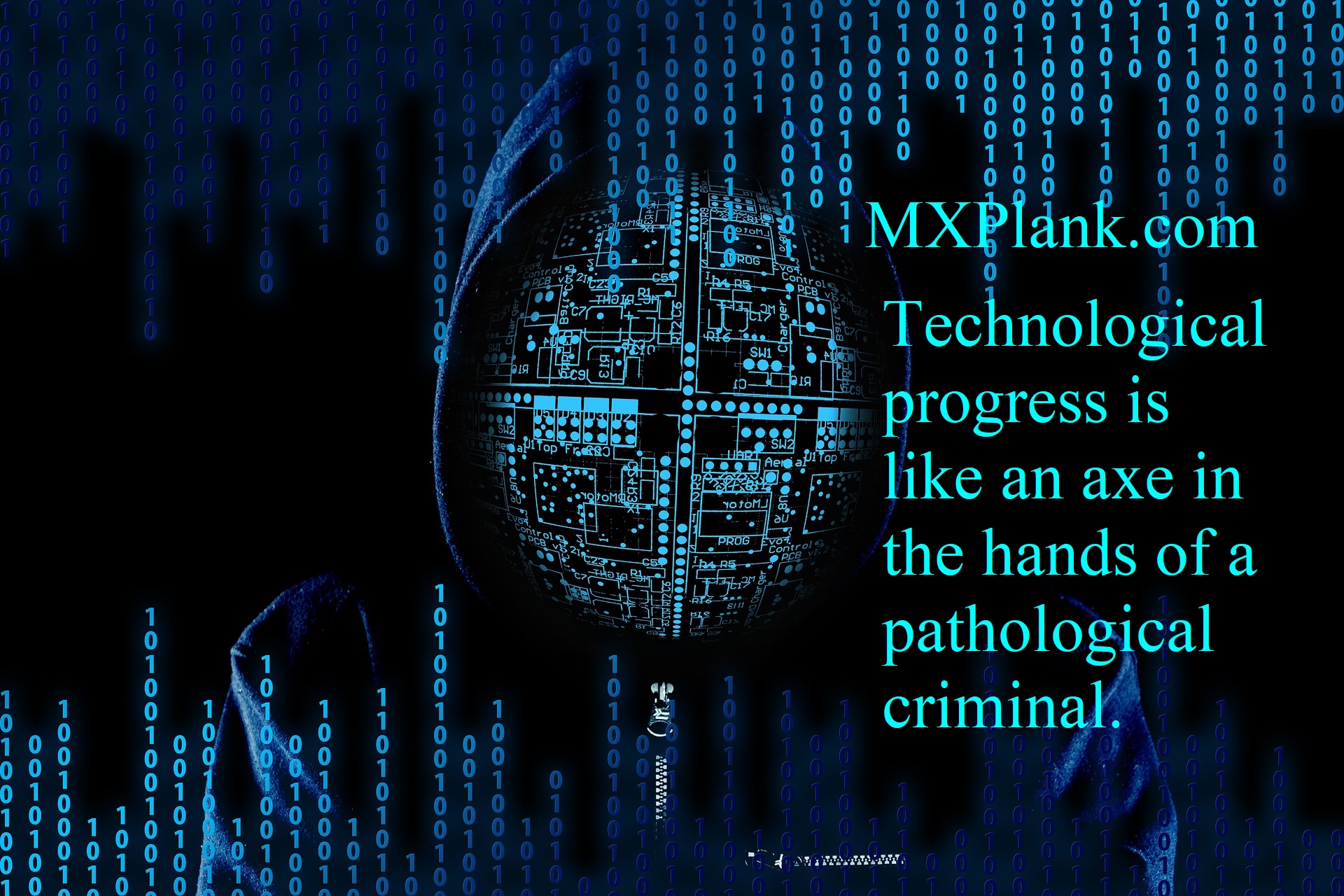TECHNOLOGICAL PROGRESS IS LIKE AN AXE IN THE HANDS OF A PATHOLOGICAL CRIMINAL

Modern technology is almost inseparable from our daily lives. However, criminals often take advantage of vulnerabilities in cyber security to commit crimes through the use of computer technology. If members of the public lack security awareness of computer network security, they can easily fall prey to online swindlers. Police appeal to the public to be vigilant and thereby avoid potential technology crime hazards.
Whilst using computer as the medium, technology crime is not that much different from traditional crime. Various common types of technology crime are listed here. We hope members of the public can take precautions.
Common technology crimes include:
Ransomware Attack:
Ransomware is malicious software that prevents or restricts a user from accessing a computer system by freezing the computer's screen or encrypting the computer files unless a ransom is paid.
Social Media Deception:
Swindlers logged in social media accounts with login names or email addresses and passwords acquired by illegal means. They then posed as the users of these accounts and sent deceptive messages to the users' friends on the contact lists, requesting them to buy virtual point cards or reload cards on their behalf. They also asked for the serial numbers/authorization codes and passwords on the cards, and then could not be reached after getting such information.
E-Banking Fraud:
In recent years, some culprits send suspicious emails to victims to induce them to open the attachments contained. When the files are opened, the victims' computers are infected by malicious programmes.
Email Scam:
In recent years, some culprits send suspicious emails to victims to induce them to open the attachments contained. When the files are opened, the victims' computers are infected by malicious programmes.
Example 1 (Corporate level): "Change of supplier bank details":
Fraudsters knew from stolen emails about the transactions of Company A (the seller, the consignor) and Company B (the buyer, the paying company). Later, fraudsters, pretending to be Company A, sent fictitious emails (which are very similar to genuine emails) to Company B, claiming that the email address and payment receiving bank account number have changed, and requesting Company B to credit the amount payable to the designated account. Afterwards, when contacting Company A by phone, Company B found out that it had been deceived by fictitious emails and suffered losses both in money and business reputation.
Example 2 (Personal level): "Overseas relatives/ friends need immediate money remittance":
After hacking into a personal email account, fraudsters sent out deceptive emails to all persons on the contact list of the account. The email defrauded that the sender had encountered an accident overseas and requested the victims to transfer money to accounts designated by the fraudsters as a matter of emergency. Some victims made the remittance without further verification and only realised that they had been cheated when contacting their relatives or friends.
Police appeal:
The Police call on all members of the public to be alert of suspicious emails, and raise their awareness in preventing this kind of scam, such as taking the initiative to confirm the true identities of recipients or the genuineness of the requests by telephone, facsimile or other means before remittances, so as to prevent such kind of scam.
Online Social Networking Traps:
As technology is advancing rapidly, computer and information technology have brought convenience to the community by allowing people from all walks of life and different age groups to obtain information from the Internet and have closer liaison with friends and relatives. While the use of the Internet by young people and children is increasingly common, they will have contact with the people they know by emails, social networking websites and messaging software as well as making friends online by these means.
Online Blackmail:
As technology is advancing rapidly, computer and information technology have brought convenience to the public, facilitating people from all walks of life and different age groups to obtain information and make contact with friends and relatives on the Internet. It is increasingly common for the public to use the Internet on which they connect with people they know by emails, social networking websites and messaging software. Also, the public would make new friends online by these means.
Technology Crime Related to Online Games:
Technology crime related to online games refer to all the criminal offences involved in online games of which some examples for reference are as follows:
Examples:
Illegal access to an online game account without authorization.
Illegal transfer of an online game account without authorization.
Deception during the transaction of "accounts", "roles", "props" or "instruments".
Selling a third-party "account" or "role" to victims using deceptive tactics.
Victim fails to recover "props" or " instruments" that have been borrowed to others while playing online games.
Online Business Fraud:
Buyer/ Seller fails to receive any goods/ payments after payment has been made/ goods have been delivered on an online platform (B2C/ C2C - Business to Customer/ Customer to Customer).
Unauthorized Access to Computer System
There are two types of cases related to unauthorized access to computer system, which are "Intrusion into a computer system" and "Internet or online account-take-over".
Others (other types of technology crime):
Any other offence committed by making use of or through the Internet or computer may be regarded as technology crime, such as:
Criminal Intimidation/ Blackmail
E-Banking Fraud
Social Networking Traps
Identity Theft
Illegal Information
Botnets






